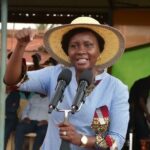Wajir County, a vast expanse in Kenya’s North Eastern region, is home to 30 electoral wards spread across six constituencies. Covering 56,773.1 square kilometers and hosting a population of over 781,263 (2019 Kenya Census), this semi-arid county blends pastoral traditions with untapped economic potential. For Kenyan business professionals, understanding these wards—from Wajir East’s urban pulse to Wajir North’s pastoral plains—offers a roadmap to a region poised for growth.
Wajir County: A Frontier of Resilience and Opportunity
Wajir County stretches across Kenya’s North Eastern region, bordered by Ethiopia to the north, Mandera to the northeast, Somalia to the east, Garissa to the south, and Isiolo and Marsabit to the west. Its six sub-counties—Wajir East, Tarbaj, Wajir West, Eldas, Wajir South, and Wajir North—divide into 30 wards, each with an MCA steering local priorities. With 149,973 registered voters (IEBC 2022), Wajir’s consumer base, though sparse, is resilient and expanding.
The county’s economy, valued at over KSh 20 billion annually (county estimates), hinges on pastoralism—over 3 million livestock—alongside small-scale farming and trade. Governor Mohamad’s push for water infrastructure and market access aligns with national Vision 2030 goals, making Wajir’s wards micro-markets worth a closer look. Here’s the full ward lineup.
Full List of Wards in Wajir County by Constituency
Wajir’s 30 wards span six constituencies, each with distinct economic beats. Below, they’re mapped out with insights into their potential.
Wajir East Constituency
Population: ~150,000 (est.). The county’s urban and trade hub.
- Khorof Hara Ward
- Profile: Rural, pastoral base near Wajir Town.
- Business Angle: Livestock trade or solar solutions.
- Barwaqo Ward
- Profile: Peri-urban, trade growth.
- Business Angle: Retail or consumer goods.
- Wagberi Ward
- Profile: Urbanizing, small markets.
- Business Angle: FMCG outlets or logistics.
- Township Ward
- Profile: Urban core, Wajir Town center.
- Business Angle: Real estate or service hubs.
Tarbaj Constituency
Population: ~100,000 (est.). A pastoral expanse with trade pockets.
- Elben Ward
- Profile: Remote, livestock-driven.
- Business Angle: Fodder farming or mobile banking.
- Saman Ward
- Profile: Rural, pastoral and trade.
- Business Angle: Meat supply or solar energy.
- Tarbaj Ward
- Profile: Trading center, agro-pastoral base.
- Business Angle: Retail or farm inputs.
- Wargadud Ward
- Profile: Pastoral with small markets.
- Business Angle: Livestock markets or microfinance.
Wajir West Constituency
Population: ~120,000 (est.). A semi-arid agro-pastoral zone.
- Arbajahan Ward
- Profile: Rural, farming and livestock.
- Business Angle: Agro-tech or veterinary services.
- Hadado/Athibohol Ward
- Profile: Pastoral, trade growth.
- Business Angle: Fodder production or consumer goods.
- Adamasajide Ward
- Profile: Remote, livestock base.
- Business Angle: Mobile markets or solar grids.
- Ganyure/Wagalla Ward
- Profile: Rural, near airstrip, trade hub.
- Business Angle: Logistics or retail.
Eldas Constituency
Population: ~90,000 (est.). A pastoral heartland.
- Eldas Ward
- Profile: Trading center, livestock focus.
- Business Angle: Meat trade or farm supplies.
- Della Ward
- Profile: Rural, pastoral base.
- Business Angle: Solar solutions or microfinance.
- Lakoley South/Basir Ward
- Profile: Remote, livestock and trade.
- Business Angle: Fodder farming or mobile banking.
- Elnur Ward
- Profile: Pastoral with small markets.
- Business Angle: Livestock markets or consumer goods.
Wajir South Constituency
Population: ~180,000 (est.). A southern pastoral and trade mix.
- Benane Ward
- Profile: Rural, farming and livestock.
- Business Angle: Agro-processing or farm inputs.
- Burder Ward
- Profile: Pastoral, trade growth.
- Business Angle: Meat supply or solar energy.
- Dabajabula Ward
- Profile: Remote, livestock base.
- Business Angle: Mobile markets or veterinary services.
- Habaswein Ward
- Profile: Trading hub, agro-pastoral base.
- Business Angle: Retail or logistics.
- Lagbogol South Ward
- Profile: Rural, pastoral focus.
- Business Angle: Fodder production or microfinance.
- Ibrahim Ure Ward
- Profile: Pastoral with small markets.
- Business Angle: Livestock trade or solar solutions.
- Diff Ward
- Profile: Remote, near Somalia border.
- Business Angle: Cross-border trade or consumer goods.
Wajir North Constituency
Population: ~140,000 (est.). A northern pastoral frontier.
- Gurar Ward
- Profile: Rural, livestock and trade.
- Business Angle: Meat supply or farm inputs.
- Bute Ward
- Profile: Trading center, pastoral base.
- Business Angle: Retail or agro-tech.
- Korondille Ward
- Profile: Remote, livestock focus.
- Business Angle: Fodder farming or mobile banking.
- Malkagufu Ward
- Profile: Pastoral with small markets.
- Business Angle: Livestock markets or solar energy.
- Batalu Ward
- Profile: Rural, farming and trade.
- Business Angle: Agro-processing or consumer goods.
- Danaba Ward
- Profile: Pastoral, trade growth.
- Business Angle: Meat trade or microfinance.
- Godoma Ward
- Profile: Remote, livestock base.
- Business Angle: Solar solutions or veterinary services.
Economic Drivers of Wajir’s Wards
Wajir’s wards power a KSh 20 billion+ economy rooted in pastoralism but branching into new terrain. Livestock—3 million cattle, camels, goats, and sheep—generate KSh 12 billion yearly (county data). Small-scale farming, like sorghum and maize in wetter wards like Benane and Arbajahan, adds KSh 2 billion. Trade in urban wards like Township and Habaswein contributes KSh 3 billion, while cross-border commerce near Diff taps Somalia’s markets.
Key highlights:
- Pastoralism: 85% of households own livestock, per 2019 Census.
- Trade: Up 5% yearly since 2020, driven by urban hubs.
- Population Density: 14 people per km², with Wajir Town at 5,000+ residents.
The Wajir-Garissa road upgrade, completed in 2023, cuts travel to Nairobi (620 km) to 10 hours, while the Wajir Airport boosts connectivity.
Business Opportunities Across Wajir’s Wards
Wajir’s 30 wards offer diverse prospects for 2025. Here’s where to dive in:
Livestock and Agro-Processing
- Target Wards: Eldas, Korondille, Benane, Batalu.
- Opportunities: Meat processing, fodder farming, or leather tanning.
- Why: Livestock exceeds local markets by 25%—value addition’s ripe.
Retail and Consumer Markets
- Target Wards: Township, Habaswein, Bute, Wagberi.
- Opportunities: FMCG outlets, tech shops, or trade hubs.
- Why: Urban wards see 6% consumer growth yearly.
Renewable Energy and Infrastructure
- Target Wards: Diff, Elnur, Godoma, Adamasajide.
- Opportunities: Solar grids or water harvesting.
- Why: Only 5% of homes use electricity—off-grid demand soars.
Cross-Border Trade and Logistics
- Target Wards: Diff, Ganyure/Wagalla, Barwaqo.
- Opportunities: Warehousing or transport services.
- Why: Proximity to Somalia and Ethiopia opens regional markets.
Challenges Facing Wajir’s Wards
Wajir’s wards face hurdles that savvy businesses can turn into wins:
- Infrastructure: 8% of roads are paved—rural wards like Danaba lag.
- Water Scarcity: 75% rely on seasonal rains—drought cuts yields 30% yearly.
- Market Access: Remote wards like Malkagufu lose 20% of livestock to poor links.
These gaps spell niches—logistics firms, water tech, or mobile markets could bridge the divide. In 2023, 30% used improved water sources, with Township at 70%—a rural-urban split to address.





